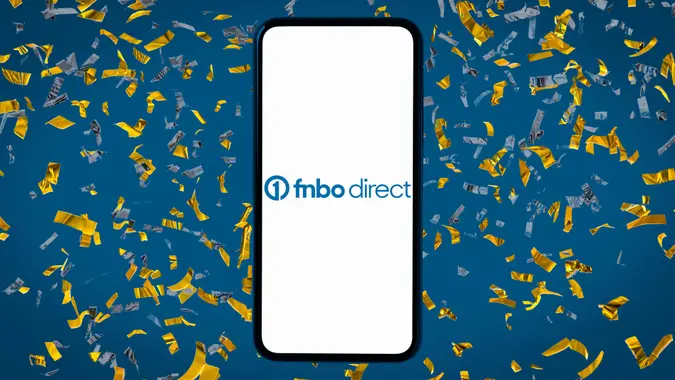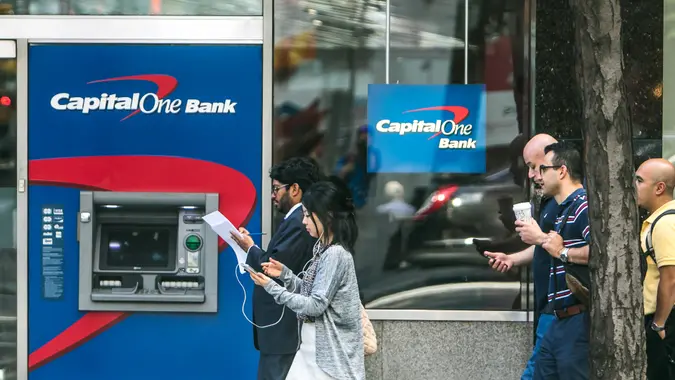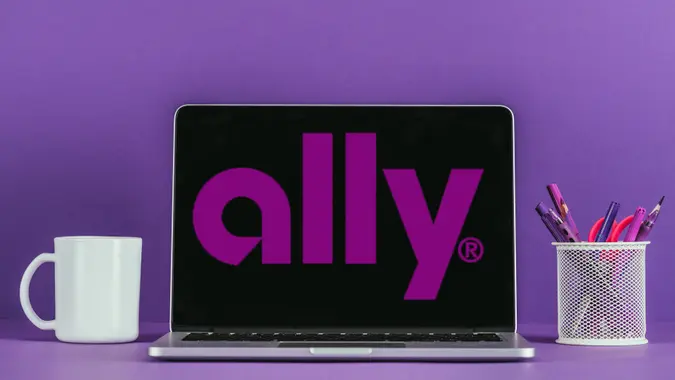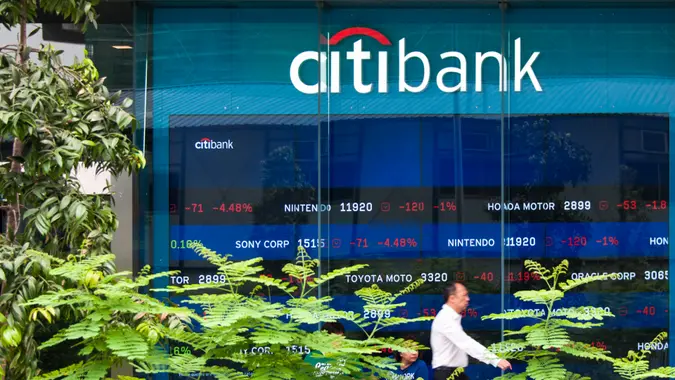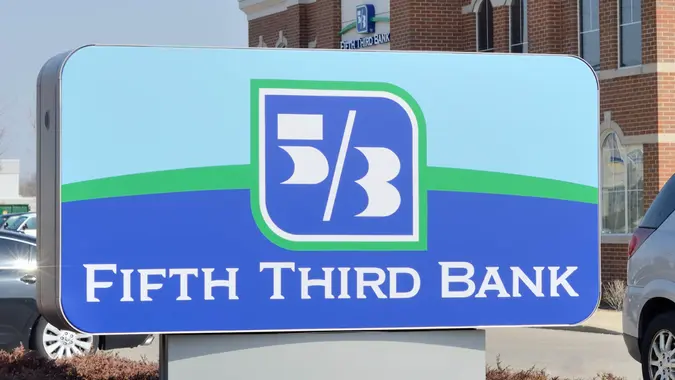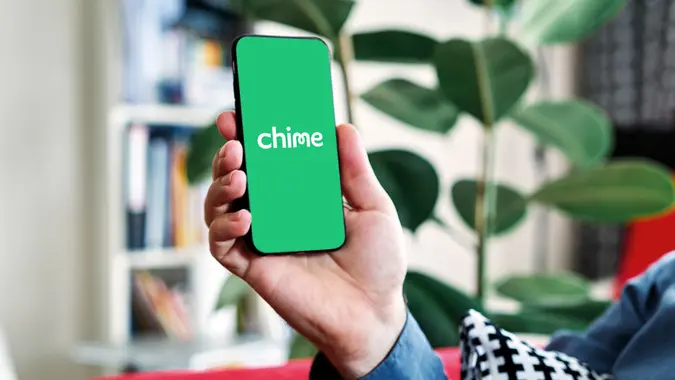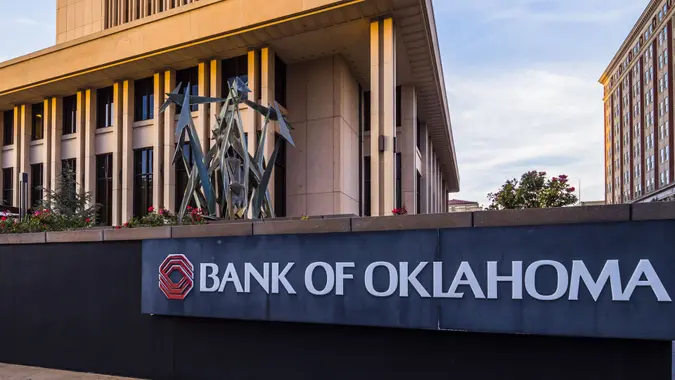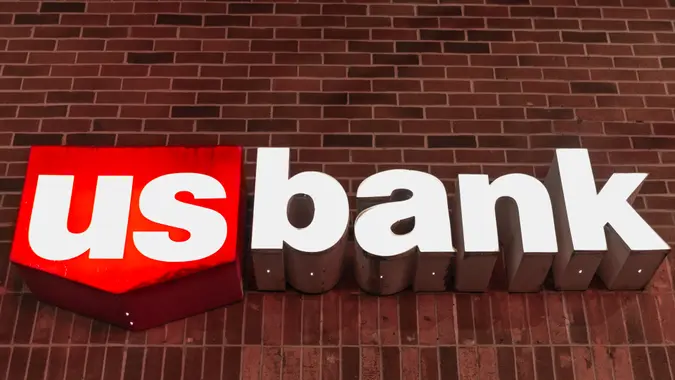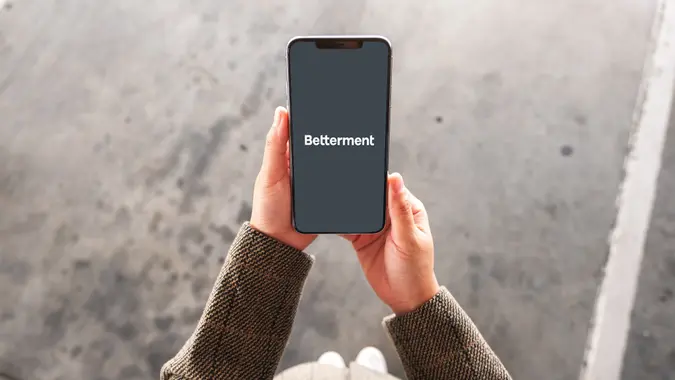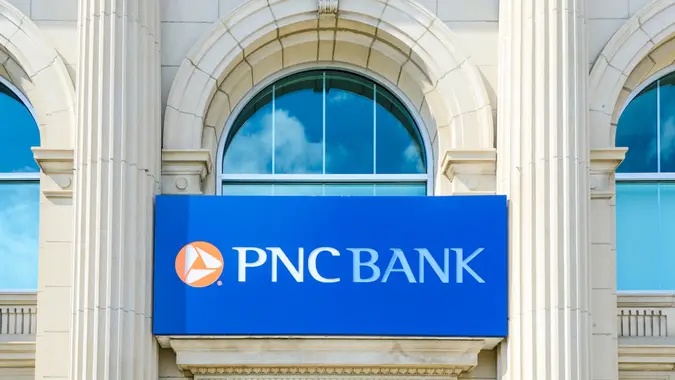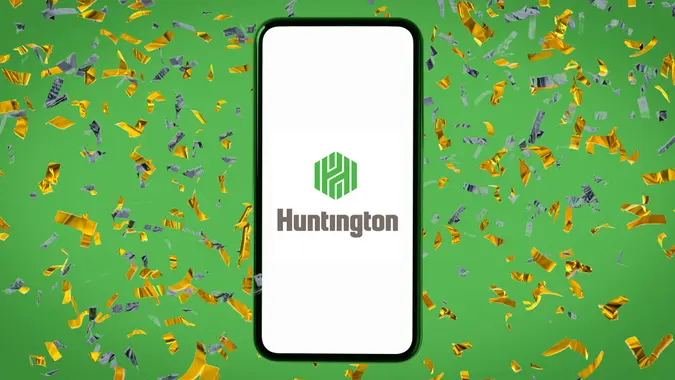Chase Overdraft Fees: How Much They Cost and How To Avoid Them
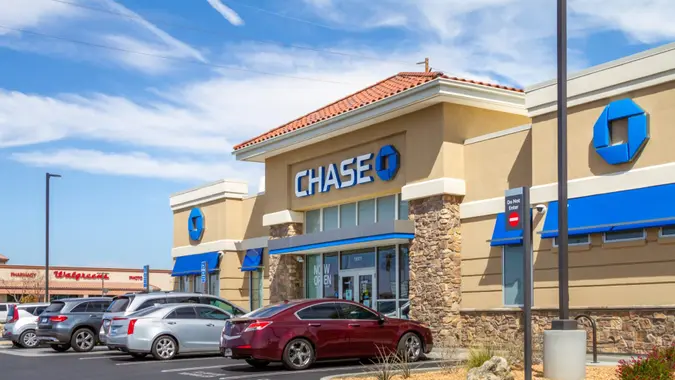
Commitment to Our Readers
GOBankingRates' editorial team is committed to bringing you unbiased reviews and information. We use data-driven methodologies to evaluate financial products and services - our reviews and ratings are not influenced by advertisers. You can read more about our editorial guidelines and our products and services review methodology.

20 Years
Helping You Live Richer

Reviewed
by Experts

Trusted by
Millions of Readers
Overdraft fees can be an expensive and frustrating surprise, especially if you’re not aware of your bank’s policies. If you have a Chase checking account, understanding how Chase overdraft fees work is essential to avoiding unnecessary charges.
Whether you occasionally overdraw your account or want to ensure you’re prepared for any financial mishaps, knowing the costs and available options can help you stay in control of your money.
Here’s a closer look at how much Chase charges for overdrafts — and the best ways to avoid these fees altogether.
What Are Chase Overdraft Fees?
If you write a check or charge your debit card for an amount greater than the balance of your checking account, and Chase Bank allows the transaction to go through, it’s called an overdraft. Chase’s overdraft fees will cost you $34 per overdraft exceeding your balance by more than $50. However, overdraft charges are limited to three per day, and Chase will waive the fee if the purchase is $5 or less.
Overdraft charges aren’t a pleasant experience, and the costs involved make it harder to save money while also jeopardizing your account.
Chase Overdraft Protection: How It Works
In addition to tracking your spending carefully to avoid overdrafts, it’s a good idea to add an extra layer of protection by linking a Chase savings account to your checking account. The savings account provides overdraft protection; if you do overdraw your account, Chase will transfer the exact amount needed to pay for the remainder of the transaction from your Chase savings account to your checking account.
Overdraft protection covers all transactions as long as you have enough in your linked savings account to cover the shortfall. If the savings balance doesn’t cover the transaction, the overdraft fee applies.
You won’t pay a fee for overdraft protection services.
Chase Debit Card Coverage
As part of Chase’s standard overdraft practice, the bank allows you to opt in or out of debit card coverage. If you opt-out, Chase will decline debit card transactions that would overdraw your account — unless you’re enrolled in overdraft protection and you have enough money in your linked savings account to cover the transaction.
Chase Bank Insufficient Funds Fee vs. Overdraft Fee
Some banks use “nonsufficient funds” or “insufficient funds” to indicate that they’ve declined a transaction that would overdraw an account. In years past, banks often charged account holders for trying to complete a transaction with insufficient funds. That’s no longer the case, and Chase doesn’t use the term as an account or payment status. It simply notes that insufficient funds are a frequent cause of overdrafts.
Chase uses its discretion to decide whether to allow a transaction that overdraws an account. It bases its decision on the account holder’s account history, deposit history and transaction amount. Unapproved transactions are declined or returned to the sender.
How To Avoid Chase Overdraft Fees
The best way to avoid overdrafts is to watch your accounts and your spending, and always have some extra funds in your account for unexpected expenses.
But anyone can make a mistake, so it’s a good idea to use the services and tools Chase offers to help you keep your account in the black.
Chase Overdraft Assist℠
With Chase Overdraft Assist℠*, Chase won’t charge you an overdraft fee if:
- Your account balance at the end of the day is overdrawn by $50 or less, or you bring your account balance up to being overdrawn by $50 or less by the end of the next business day
- Your purchase is $5 or less
- You use your Chase debit card for a transaction when there is still enough money in your account to cover it.
The cutoff times for bringing up your balance are as follows:
- At a branch: Before it closes
- At an ATM: Before 11 p.m. ET
- Transferring money online, through the app or via Zelle: Before 11 p.m. ET
Chase Overdraft Protection
To enroll in Chase overdraft protection, open and fund a Chase savings account. While logged in to mobile banking, select your checking account. Then select “Overdraft protection” from the list of account services and follow the prompts to enroll.
From the Overdraft Protection page of the Chase website, located here, follow the prompts to log in and update your Overdraft Protection settings.
Budgeting Tools
Creating and sticking to a budget is key to avoiding overdrafts. The Chase Mobile app and Chase online banking have a feature called Budget that you can use to set up a monthly budget and track your spending in your choice of categories.
The budget is available to all Chase checking account customers.
Account Alerts
Chase lets you choose from several online account alerts that give you a heads-up that your account might need attention. You’ll find the alerts listed under your account settings[no instructions on the website for consumer accounts or mobile businesses].
Chase Overdraft Limit and Eligibility
Chase’s overdraft rules are fairly straightforward. Per its fee schedule, Chase allows fees for three overdrafts per day, for a total daily charge of up to $102.
There are no specific Chase overdraft limits. However, Chase uses its discretion when approving an overdraft transaction. It may deny the transaction or return it unpaid to the merchant if it decides not to approve the overdraft. Your account history, deposit history and the transaction amount all factor into your decision.
All Chase checking accounts except Chase High School Checking℠, Chase Secure Checking℠ and Chase First Checking℠ are subject to Chase’s standard overdraft practice.
Chase Overdraft Forgiveness and Refunds
Overdraft Assist ℠ is Chase’s overdraft forgiveness program. If your account is overdrawn by more than $50, you can have the fee waived by bringing the negative balance to $50 or less by the end of the next business day.
Otherwise, you can contact Chase customer service and ask to have your overdraft fee removed, but whether Chase will do so or not is up to the bank representative.
Alternatives to Overdrafting Your Account
You might feel you have no choice but to overdraw your account when you need cash for an emergency, but you do have alternatives.
Although the best one — an emergency fund — takes time to build, you can open a Chase savings account for that purpose. But don’t link it to your checking account — routine overdrafts might run down the balance. Use a separate savings account for overdraft protection and reserve your emergency savings for true emergencies.
If you have a credit card, you can charge emergency expenses instead of overdrawing your account. Just realize that debt can make a difficult financial situation worse. You’ll still have the pay the expense, plus you’ll owe interest on any portion of your statement balance you can’t pay off during the grace period.
Credit card cash advances are an option for emergency expenses you can’t charge to a credit card, such as a mortgage payment. Review your credit card account information first, though. The card might have limits on how much cash you can draw against your credit limit. Also, you might have to pay a fee for the cash advance, and the interest rate could be higher than for a purchase made with the same card.
Final Take to Go
Chase overdraft fees can add up quickly, but understanding how they work and taking proactive steps can help you avoid unnecessary charges. By keeping track of your balance, setting up alerts, and opting into overdraft protection or linking accounts, you can minimize the risk of costly fees.
If you frequently find yourself on the hook for overdraft fees, it may be worth exploring alternative banking options with lower fees.
Take a moment to review your account settings and consider the best strategy to manage your finances — small changes can lead to big savings.
More on Chase
- Chase Bank Review: Is It the Right Bank for You?
- Newest Chase Promotions: Best Offers, Coupons and Bonuses
- Chase Routing Number – Locate Your Number
- How To Open a Chase Checking Account
- How To Avoid Chase Monthly Maintenance Fees
- Chase Interest Rates: How To Get the Bank’s Best Rates
- What Is the Chase Cashier’s Check Fee?
- How To Set Up Chase Direct Deposit
- What Are Chase Bank’s Hours?
- How To Find and Use Your Chase Bank Login
More on Overdraft Fees
FAQ
Here are questions other Chase customers are asking about the bank's overdraft policies.- How much is the Chase overdraft fee?
- Chase charges $34 for overdrafts not covered by Overdraft AssistSM. You can incur up to three overdraft fees per day.
- Does Chase offer overdraft forgiveness?
- Yes. Chase Overdraft Assist eliminates your overdraft fee if you bring your checking account balance to $50 overdrawn or less by the end of the next business day.
- How can I get a Chase overdraft refund?
- You can call the bank's customer service number to request an overdraft fee refund. However, there's no guarantee the bank will issue one.
- What is the Chase overdraft limit?
- Chase doesn't specify a limit.
- Can I overdraft my Chase account without a fee?
- Yes, if you're enrolled in overdraft protection your overdraft is $50 or less or the transaction amount is $5 or less.
Virginia Anderson contributed to the reporting for this article.
Information is accurate as of April 26, 2024.
The information related to Chase Private Client and Chase Sapphire Checking was collected by GOBankingRates and has not been reviewed or provided by the issuer of these products. Product details may vary. Please see issuer website for current information. GOBankingRates does not receive a commission for these products.
*With Chase Overdraft AssistSM, Chase won’t charge an insufficient funds fee if you’re overdrawn by $50 or less at the end of the business day, or if you’re overdrawn by more than $50 and you bring your account balance to overdrawn by $50 or less at the end of the next business day (you have until 11 p.m. ET, or 8 p.m. PT, to make a deposit or transfer). Chase Overdraft Assist does not require enrollment and comes with eligible Chase checking accounts.
J.P. Morgan Wealth Management is a business of JPMorgan Chase & Co., which offers investment products and services through J.P. Morgan Securities LLC (JPMS), a registered broker-dealer and investment adviser, member FINRA and SIPC. Insurance products are made available through Chase Insurance Agency, Inc. (CIA), a licensed insurance agency, doing business as Chase Insurance Agency Services, Inc. in Florida. Certain custody and other services are provided by JPMorgan Chase Bank, N.A. (JPMCB). JPMS, CIA and JPMCB are affiliated companies under the common control of JPMorgan Chase & Co. Products not available in all states.
INVESTMENT AND INSURANCE PRODUCTS: • NOT A DEPOSIT • NOT FDIC INSURED • NOT INSURED BY ANY FEDERAL GOVERNMENT AGENCY • NO BANK GUARANTEE • MAY LOSE VALUE
Editorial Note: This content is not provided by Chase. Any opinions, analyses, reviews, ratings or recommendations expressed in this article are those of the author alone and have not been reviewed, approved or otherwise endorsed by Chase.
Our in-house research team and on-site financial experts work together to create content that’s accurate, impartial, and up to date. We fact-check every single statistic, quote and fact using trusted primary resources to make sure the information we provide is correct. You can learn more about GOBankingRates’ processes and standards in our editorial policy.
- Chase Bank "Standard Overdraft Practice"
- Chase Bank "Overdraft Protection"
- Chase Bank "Debit Card Coverage"
- Chase Bank "What is a bounced check?"
- Chase Bank "Build a budget, stay on track"
- Chase Bank "Account Alerts"
 Written by
Written by  Edited by
Edited by 



